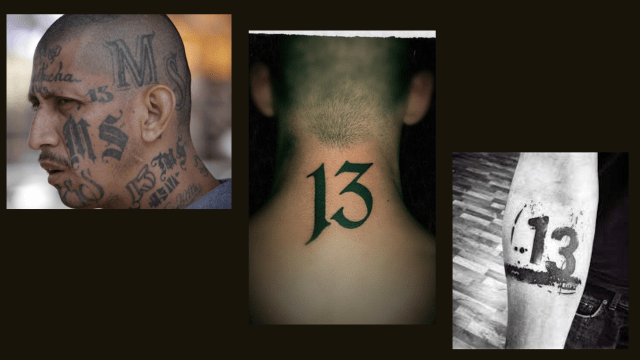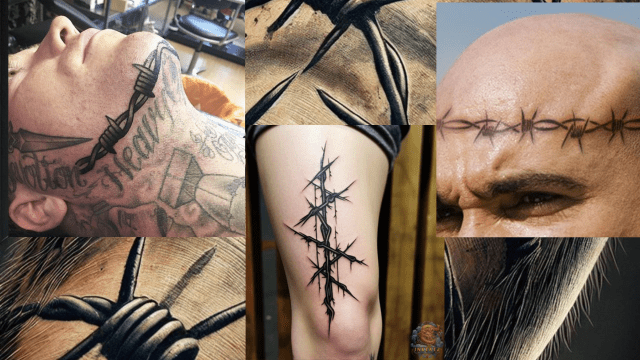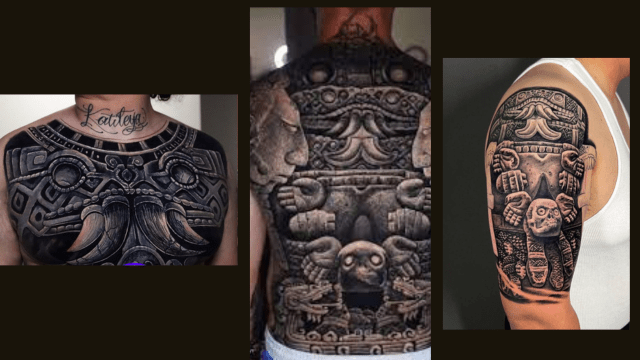Beneath the stark prison walls lies a hidden world of ink and symbolism, where every mark tells a story of survival, loyalty, and defiance. Prison tattoos are far more than mere decoration; they form a secret language etched in skin, revealing tales of criminal exploits, gang allegiances, and deeply held convictions.

Join us as we peel back the layers of this clandestine art form, uncovering the rich history and profound significance of tattoos behind bars. From crude jailhouse designs to intricate masterpieces, these markings offer a rare glimpse into the complex social dynamics and unspoken rules that govern life on the inside.
The History of Prison Tattoos
The practice of tattooing in prisons dates back centuries. In the early days, inmates used makeshift tools such as guitar strings, paper clips, or sharpened staples to create crude designs. Over time, these techniques evolved, and today, despite being illegal in most correctional facilities, prison tattooing continues to thrive.
A prison tattoo documentary would likely reveal that these markings serve multiple purposes: they can be a form of self-expression, a way to show allegiance to a gang, or a means of recording one’s criminal achievements. The prison tattoo history is rich with symbolism and hidden meanings, often indecipherable to those outside the prison system.
15 Notorious Prison Tattoos and Their Meanings

The Teardrop
One of the most recognizable prison tattoos, the teardrop under the eye, has multiple interpretations. In the prison tattoo meanings teardrop, it often signifies that the wearer has killed someone. However, it can also represent the loss of a loved one or years spent behind bars. The placement of the teardrop – under the eye – is significant as it mimics the path of a real tear. The number of teardrops can also be meaningful, sometimes indicating the number of lives taken or years served.
The Three Dots
A tattoo of 3 dots arranged in a triangle is known as “mi vida loca” or “my crazy life.” This simple design is often found on the hands or near the eyes and represents the prison lifestyle. The three dots can symbolize the trinity of “prison, hospital, cemetery” – often viewed as the three most likely destinations for those involved in criminal life. Its simplicity makes it easy to apply, even with makeshift prison tattooing equipment. The placement on visible areas like hands or face ensures that others can quickly recognize the wearer’s affiliation with prison culture.

The Cobweb
Usually tattooed on the elbow, this intricate design carries deep significance. Like a spider’s web collecting dust over time, the cobweb tattoo signifies a lengthy prison stay. It can indicate that the inmate feels trapped or stuck in the system, much like an insect caught in a web. The more elaborate and extensive the web, the longer the implied sentence. Some prisoners add to the web over time, creating a visual record of their incarceration.

The Number 13
In the complex world of prison tattoos, numbers often carry coded meanings. The number 13 is particularly significant, closely tied to the Mexican Mafia or “La Eme” (Spanish for “The M,” the 13th letter of the alphabet). This powerful prison gang uses the number as a calling card and a way to claim territory. The tattoo can be rendered in various styles, from simple numerals to more elaborate designs incorporating the number.

The Clock with No Hands
This haunting image of a timeless clock is a powerful symbol of the prison experience. It represents the feeling that time has stopped or lost all meaning within the confines of incarceration. For inmates, each day can blend into the next, creating a surreal sense of timelessness. This tattoo serves as both a personal reminder of their sentence and a visual representation of the psychological impact of imprisonment.

The Barbed Wire
Few images capture the essence of imprisonment as viscerally as barbed wire. When tattooed around the arm or across the forehead, it’s often a grim indicator of a life sentence. The perpetual, encircling nature of the wire mirrors the inmate’s permanent confinement. Some prisoners add marks or breaks in the wire to count the years served, creating a personal timeline of their incarceration.

The Five-Point Crown
This regal symbol is intimately associated with the Latin Kings, one of the largest and most organized Hispanic gangs. Each point of the crown represents a key tenet of the gang’s philosophy: love, respect, sacrifice, honor, and obedience. Wearing this tattoo isn’t just a sign of membership; it’s a pledge of unwavering loyalty to the gang’s ideals and hierarchy. It also serves as a warning to rivals and a signal of protection to fellow members.

The Aztec Symbol
These intricate designs tap into a rich cultural heritage, allowing inmates of Mexican descent to express pride in their roots. The symbols chosen often carry deep personal or spiritual meaning. An eagle might represent strength and freedom, while a serpent could symbolize wisdom or rebirth. The Aztec sun stone, with its complex calendar system, might signify the passage of time or the cyclical nature of life and death.

The White Supremacist Symbols
These controversial tattoos are used by various white supremacist prison gangs to identify members and intimidate others. The Nazi swastika is perhaps the most infamous, carrying with it a legacy of hate and violence. The letters “AB” stand for the Aryan Brotherhood, a notorious prison gang. Other symbols might include Norse runes, Celtic crosses, or numerical codes like “14/88”. These tattoos not only mark gang affiliation but also broadcast a dangerous ideology.
The Sailor Jerry-Style Swallows
Borrowed from traditional nautical tattoos, these birds take on new meaning in a prison context. Traditionally, sailors would get swallow tattoos to mark significant voyages. For prisoners, each swallow can represent a certain amount of time served, typically a year. The placement on the chest, over the heart, adds to the symbolic weight. These tattoos tell a story of endurance and the long journey through a sentence.
The Dice
Often found on highly visible areas like the neck or hands, dice tattoos speak to the element of chance in a prisoner’s life. They can represent a willingness to take risks, reflecting the high-stakes decisions that may have led to incarceration. For some, they symbolize a gambling addiction or a belief in fate. The specific numbers showing on the dice may also carry personal significance, such as important dates or lucky numbers.
The Christ Figure
In the harsh world of prison, many inmates turn to faith for solace and strength. Tattoos of Christ, whether depicted on the cross or in other iconic poses, can serve multiple purposes. For some, it’s a symbol of protection, a spiritual shield against the dangers of prison life. For others, it represents hope for redemption or a commitment to change. These tattoos can also signal to others that the inmate adheres to Christian values, potentially offering a degree of respect or safety in certain prison environments.
The Broken Heart
This tattoo can represent disillusionment with the criminal lifestyle or the loss of a loved one. The broken heart symbol often reflects deep emotional pain and trauma experienced by inmates. It may signify a person’s realization that their choices have led to painful consequences, both for themselves and their loved ones. The tattoo can also represent the heartbreak of being separated from family and friends while incarcerated.
The Horseshoe
Often seen as a symbol of good luck, in prison, it can also mean that the wearer is hoping for a successful escape. In a prison context, this symbol takes on added layers of meaning. It may represent an inmate’s hope for a positive turn in their circumstances, such as a successful appeal or early release. The connection to escape is particularly significant, as it reflects the wearer’s desire for freedom and their willingness to take risks to achieve it.
The Grim Reaper
This tattoo can symbolize a close brush with death or a willingness to embrace the risks of criminal life. For some inmates, this tattoo may serve as a reminder of a near-death experience, whether from violence, drug use, or other dangerous situations they’ve encountered. It can also be a way of showing fearlessness in the face of death, which may be seen as a valuable trait in the often violent world of prison life.
The Significance of Prison Tattoos
Prison tattoos are more than just body art; they’re a complex system of nonverbal communication. In the harsh environment of a correctional facility, these markings can provide crucial information about an inmate’s background, criminal history, and allegiances.
For example, the notorious teardrop tattoo, one of the most recognizable in the prison tattoo meanings list, can instantly convey that an inmate has committed murder or lost a loved one. Similarly, a tattoo of 3 dots might seem simple to an outsider, but to those familiar with prison culture, it speaks volumes about the wearer’s commitment to the criminal lifestyle.
The Dangers of Prison Tattooing
While prison tattoos hold significant cultural and personal meaning for inmates, the practice of tattooing in correctional facilities is fraught with risks. The lack of proper equipment and sterilization techniques can lead to serious health issues, including infections and the spread of bloodborne diseases like hepatitis and HIV.
Moreover, certain tattoos can make life more difficult for inmates, both within the prison system and upon release. Gang-related tattoos, for instance, can mark an individual as a target for rival groups. Visible tattoos associated with criminal activity can also hinder reintegration into society and employment opportunities after release.
The Evolution of Prison Tattoo Culture
As depicted in many a prison tattoo documentary, the culture and meanings associated with these markings continue to evolve. What once might have been a clear indicator of a specific crime or affiliation can change over time or vary between different prison systems.
Furthermore, as tattooing has become more mainstream in society at large, the line between prison tattoos and conventional body art has blurred. Some former inmates choose to keep their prison tattoos as a reminder of their past, while others opt to have them removed or covered up as part of their rehabilitation process.
The Bottom Line
The world of prison tattoos is a complex and ever-changing landscape of symbols and meanings. From the infamous teardrop to the simple yet powerful tattoo of 3 dots, these markings tell stories of crime, punishment, loyalty, and loss. While they remain a significant aspect of prison culture, it’s important to remember the risks and potential consequences associated with these tattoos.
As society continues to grapple with issues of criminal justice and rehabilitation, understanding the language of prison tattoos provides valuable insight into the experiences and mindsets of those within the correctional system. Whether viewed through the lens of a prison tattoo documentary or studied as part of criminal psychology, these markings offer a unique window into a world that remains largely hidden from public view.
Also Read: 10 of the Most Notorious Traitors in History